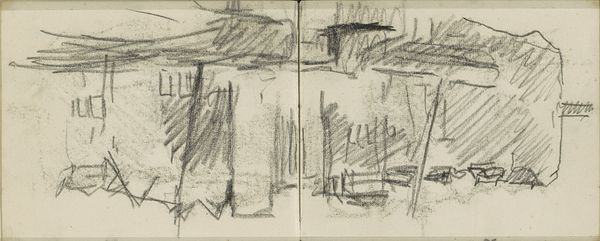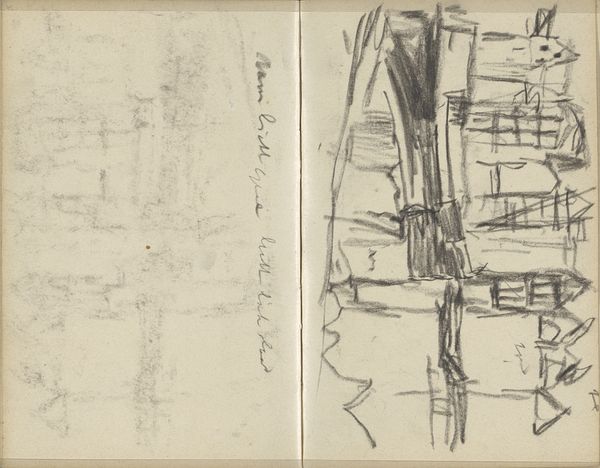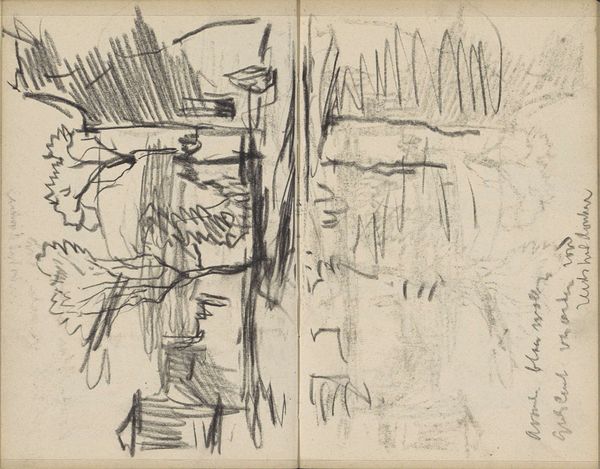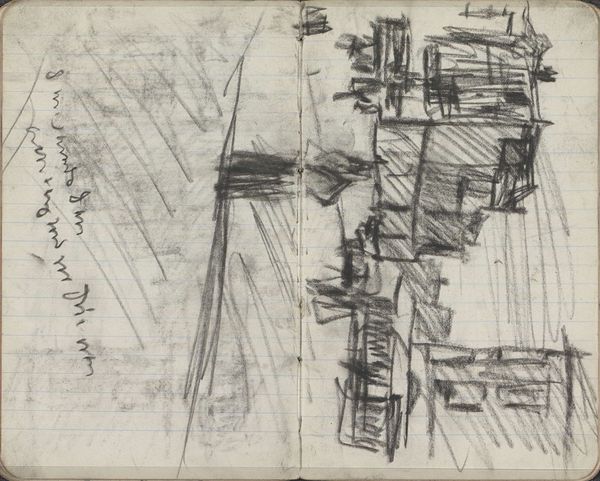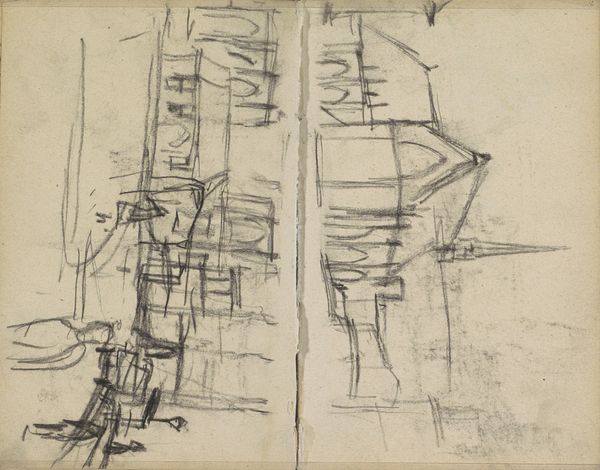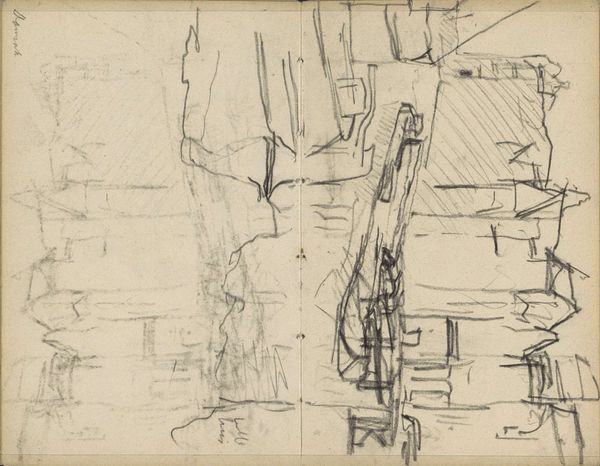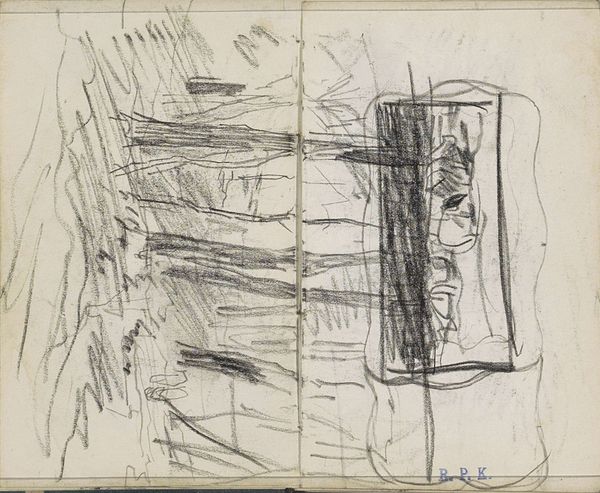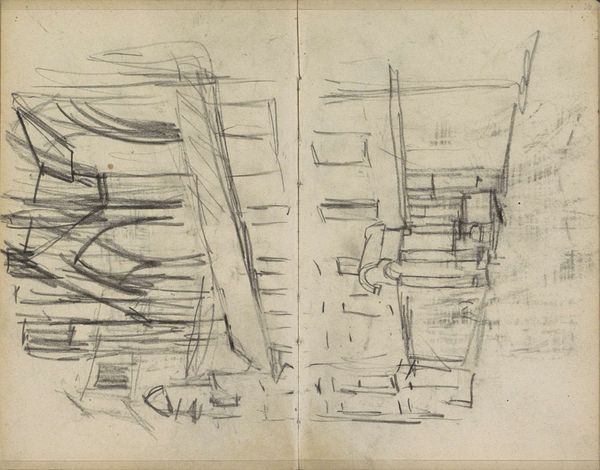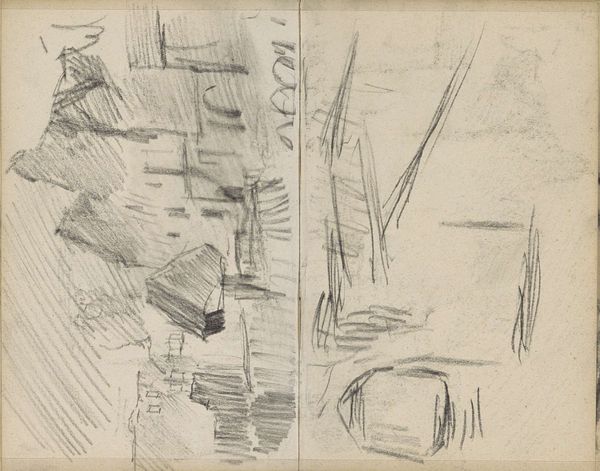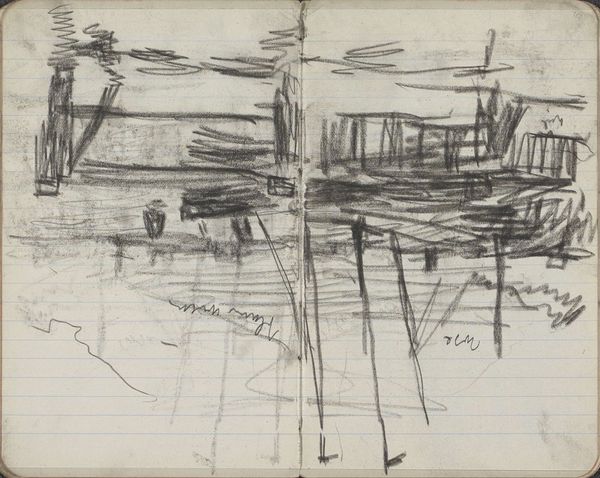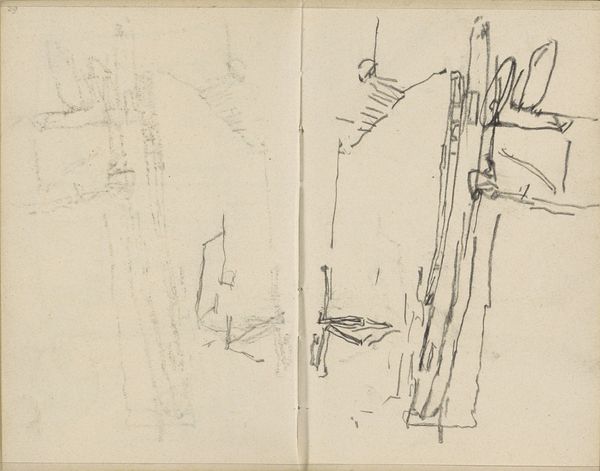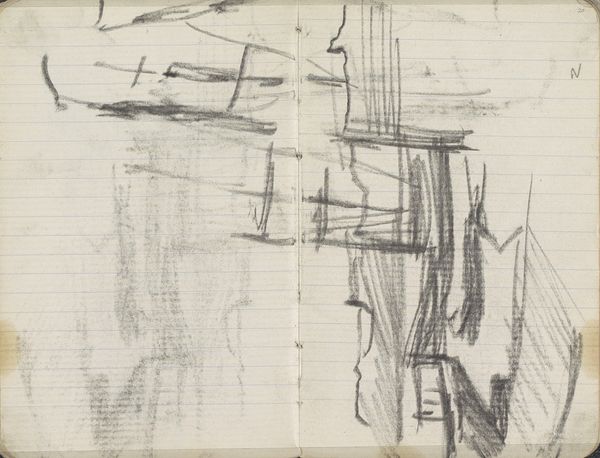
Gezicht op de Lauriergracht te Amsterdam bij avond c. 1886 - 1891
0:00
0:00
drawing, pencil, graphite
#
drawing
#
impressionism
#
landscape
#
pencil
#
graphite
#
cityscape
Copyright: Rijks Museum: Open Domain
Editor: Here we have George Hendrik Breitner's "Gezicht op de Lauriergracht te Amsterdam bij avond," created around 1886-1891. It’s a graphite drawing, capturing a cityscape at night. I’m immediately struck by how the sketchiness adds to the feeling of a fleeting moment. What aspects of Amsterdam's cultural or social history might this drawing reflect? Curator: That's a great observation! Breitner's choice of subject – a common canal view – reflects a broader shift in art towards depicting everyday urban life. Amsterdam in the late 19th century was rapidly industrializing and expanding. This drawing, while seemingly simple, participates in the larger project of modern artists capturing the changing face of the city and perhaps responding to the social inequalities arising in this transformation. Editor: So, he's choosing a seemingly mundane subject, but is really commenting on societal shifts. Do you think the time of day depicted influences that at all? Curator: Absolutely. The night scene adds another layer. Think about the burgeoning culture of nightlife in expanding cities, the social interactions happening under the cover of darkness, both celebrated and stigmatized at the time. Are these quiet domestic scenes, or something more ambiguous, capturing a period of huge social change? Editor: That’s fascinating; I hadn’t thought about the "night" aspect contributing to his social commentary. Thank you for pointing that out! Curator: It also reminds us that artworks are not simply isolated objects, but pieces within much larger cultural narratives and that as viewers, we participate in interpreting those stories.
Comments
No comments
Be the first to comment and join the conversation on the ultimate creative platform.
